
Antony van Leeuwenhoek: Creation “Magnified” Through His Magnificent Microscopes
Abstract
Although van Leeuwenhoek was not the inventor of the microscope, he advanced it more than anyone else for seeing living things.
Keywords: Anton van Leeuwenhoek, history microscopes, history of microbiology, history of protozoology; Father of Microbiology, Christian biologist, creation scientist, microbe hunter
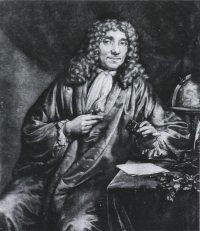
Figure 1. Antoni van Leeuwenhoek (1686) Portrait. By Jan Verkolje (1650—1693) (ihm.nlm.nih.gov/images/B16786) [Public domain], via Wikimedia Commons.
Antony van Leeuwenhoek1 (Fig. 1) found great joy in God’s smallest creatures. He first discovered protozoans in his youth. The Dutch haberdasher retained a child-like joy of discovery from his youth until his death at age 90. He lived to see tiny microbes though his homemade microscopes. He loved to grind and focus a new lens in order to see the unseen world. Leeuwenhoek spent countless hours grinding tiny lenses and looking through them. This Christian lay biologist even used candlelight to see specimens at night. For Leeuwenhoek, the amazing diversity of tiny life forms revealed under his homemade microscopes glorified God as much as looking at stars through a telescope. Leeuwenhoek was born in South Holland in 1632. As a young adult, he became a cloth merchant (also called a draper, or haberdasher). In 1668, he started his biological study as a hobby after seeing beautiful microscopic pictures while making a visit to London. After years of careful study, Leeuwenhoek (Fig. 2) made the microscope famous. In his lifetime, he became the father of microbiology and opened mankind to the world of microorganisms.
Father of Microscopy
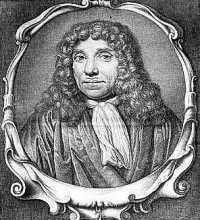
Figure 2. Antoni van Leeuwenhoek Brieven (1688): an image used when he corresponded to the Royal Society (like a seal) and with his collective works. Portrait by Abraham de Blois [Public domain], via Wikimedia Commons.
Although van Leeuwenhoek was not the inventor of the microscope, he advanced it more than anyone else for seeing living things. He started bacteriology and protozoology, he advanced parasitology, and he accurately described many human cells, including red and white blood cells, sperm, and other human tissues (e.g. skeletal muscle). By 1673, Leeuwenhoek was discovering things with his superior microscopes (Fig. 3) that no human eye had ever seen!
Van Leeuwenhoek began sharing his discoveries with scientists of the Royal Society of London. At first, these British biologists were skeptical of his discoveries, because they thought van Leeuwenhoek was an untrained layman. For example, in 1676, he described finding bacteria and protozoans so tiny that “ten thousand of these living creatures could scarce equal the bulk of a coarse sand grain.” The Royal Society requested corroboration from other eyewitnesses; so several British biologists corroborated what they had also seen through Leeuwenhoek’s microscope. Later on, van Leeuwenhoek’s reputation grew, and he was elected a fellow of the Royal Society. The amateur microscopist kept up a sparkling communication with the British biologists, who published hundreds of his letters. They also translated them from Latin into English.
Leeuwenhoek’s Simple Microscopes

Figure 3. One of Leeukenhoek’s actual microscopes. It is kept in Leiden, Netherlands, at the Boerhaave Museum. By Museum Boerhaave, Leiden (Museum Boerhaave, Leiden) [CC-BY-SA-3.0 (http://creativecommons.org/licenses/by-sa/3.0)], via Wikimedia Commons.
Leeuwenhoek constructed simple microscopes, i.e. those that had only one lens. In contrast, the commonly known microscopes of the Jansen brothers, Galileo, and Hooke were compound, i.e. having two lenses. (Leeuwenhoek learned about the latter from Robert Hooke, by reading Hooke’s Micrographia about a year after publication).
Unfortunately at that time, all the images produced by compound microscopes had distorted shape and chromatic aberration, i.e. they were distorted in color. In contrast, Leeuwenhoek was able to find ways of grinding a single lens to produce images of greater magnification and clarity than Robert Hooke’s double lens models could produce (Ford 1985). The kind of microscope that van Leeuwenhoek used was hand-made, sometimes being fashioned from metals that he refined and then beat into shape himself. He also made the lenses himself, from fragments of glass. He greatly improved the images seen through these simple microscopes. The highest magnification of extant microscopes is 266X; but many believe he constructed lenses of 500X. In addition, Dobell (1932) and others believe that Leeuwenhoek found a method of darkfield microscopy.
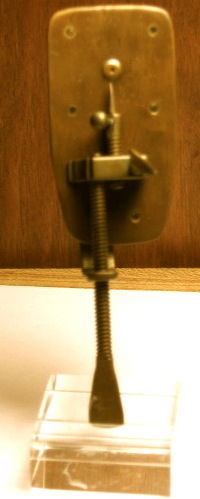
Figure 4. Author Alan Gillen’s personal replica of Leeuwenhoek’s microscope in Leiden. It has a 100X objective.
Although van Leeuwenhoek’s microscopes were diverse (Figs. 3, 4, and 5), they all had a similar construction design: their ground lenses were sandwiched between two metal (silver, brass, or gold) plates that were tightly riveted at their corners (Figs. 3, 4, and 5). A long screw passed up from the microscope bottom and supported a stage block, into which a focusing screw was set. This screw projected through the block and pushed against the plate when screwed in, moving the stage block slowly away from the lens. By turning the screw carefully, the object could be brought into focus. On the top of the stage lock was a third screw terminating in a blunt point. This was the place where the specimen was set, either by being pierced or stuck in position with glue. Into the side of this was a little handle that enabled the specimen-holder to be turned around, so the object could be examined from all sides (Ford 1985).

Figure 5. A Silver Replica (c1690) of one of Leeuwenhoek’s microscopes (Science Heritage, used by permission, 2012). Most of Leeuwenhoek’s microscopes were silver. The last one (c1690) that was auctioned by Christie’s in London sold for £313,250 (~$491,000).
Many people who see the typical brass microscope replica shown in Figure 3 think that this was the only type of microscope that Leeuwenhoek ever made. However in fact, he made at least 247 completed microscopes and 419 lenses, and some scholars estimate that he made and ground a total of more than 500 lenses to be placed in such microscopes. Of the 247 microscopes cataloged (at an auction), he constructed 160 microscopes from silver, 85 from brass, and three from gold plates. In terms of diversity, more of van Leeuwenhoek’s microscopes were made of silver (Fig. 5) than of brass. Furthermore, many gold and silver ones disappeared after an auction by his daughter, Maria; and these were probably melted down for their precious metals. Most of the latter had apparently been outfitted with one lens; however, two had two lenses and one microscope had three lenses in it (Anderson 2012).
The Unseen World of Antony van Leeuwenhoek
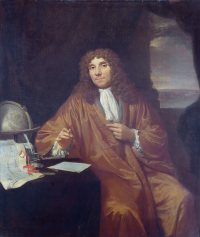
Figure 6. An excellent painting of Antonie van Leeuwenhoek by Jan Verkolje (I) [Public domain], via Wikimedia Commons.
Leeuwenhoek’s letters shine with his pleasure of innovation. Describing the “wee animalcules” (little animals) and “cavorting beasties” (protozoa and bacteria) he observed in a drop of fresh water, he wrote, “The motion of most of them in the water was so swift, and so various, upwards, downwards, and roundabout, that I admit I could not but wonder at it. I judge that some of these little creatures were above a thousand times smaller than the smallest ones which I have hitherto seen. . . . Some of these are so exceedingly small that millions of millions might be contained in a single drop of water” (Gillen 2007). Leeuwenhoek (Fig. 6) investigated almost anything he could mount, exemplifying technical skill that became a model for others. He was the first to observe protozoans, like Vorticella and Volvox, and tiny animals called rotifers. When Leeuwenhoek described “minute eels,” he was looking at a spirillum-shaped bacterium, probably Spirillum volutans. These are common bacteria found in peppercorn infusions. Many of the protozoans he described came from peppercorn and hay infusions, along with pond water.
He observed red and white blood cells and was the first to see sperm cells and their whipping action. He advanced proofs against spontaneous generation, a popular doctrine in his day. This taught that living things emerge spontaneously from inanimate matter: shellfish from sand, maggots from meat, and weevils from wheat. He observed the complete life cycles of various insects, such as ants and fleas, and began advancing the idea of biogenesis: that microbes must have “parents.” Later, the Italian scientist Spallanzi would prove it.
Thinking God’s Thoughts through the Microscope
According to David Coppedge in his article (p. 43), Microscopic Magnificence, Leeuwenhoek was “born into the Dutch Reformed tradition, which encouraged man’s investigation of God’s handiwork in nature. Leeuwenhoek shared with Robert Boyle and other ‘new philosophers’ of science a concern to glorify God and benefit humankind through research.” He was one who sought God’s thoughts after Him (Psalm 139:17). He interwove his letters with statements declaring the greatness and wisdom of the God. Leeuwenhoek believed that an intelligent Designer made the wonders he saw through his microscope (Gillen 2007)! For example:
From all these observations, we discern most plainly the incomprehensible perfection, the exact order, and the inscrutable providential care with which the most wise Creator and Lord of the Universe had formed the bodies of these animalcules, which are so minute as to escape our sight, to the end that different species of them may be preserved in existence. And this most wonderful disposition of nature with regard to these animalcules for the preservation of their species; which at the same time strikes us with astonishment, must surely convince all of the absurdity of those old opinions, that living creatures can be produced from corruption of putrefaction. (Schierbeek 1959 p. 171).
He was amazed at the intricacy that the Creator had built into even the smallest cells. His apologetic against spontaneous generation and for biogenesis would lay the groundwork for Pasteur later in the 1800s. He worked diligently to demonstrate the Genesis principle: that all living things reproduce faithfully and continually after their kind. After studying small organisms for a lifetime, Leeuwenhoek asserted, “This must appear wonderful, and be a confirmation of the principle that all living creatures deduce their origin from those which were formed at the Beginning” (Dobell 1932).
Parasitology

Figure 7. Giardia was discovered by Leeuwenhoek. Microscope image via Wikimedia Commons.
Leeuwenhoek also started advanced parasitology using a microscope. He observed Giardia, sheep liver flukes (Fasciola hepatica), and many others (like aerobic Crithidia: trypanosome-like protozoan parasites). In 1681, he examined his own stool samples during times of diarrhea. In his runny stool, he found little animals. Leeuwenhoek described Giardia being a slow moving animal, but able to make quick motions with their “paws.” Today, we know this is a helical motion that is caused by flagella. Van Leeuwenhoek saw that these moving parasites were in their trophozoite stage. The “paws” that Van Leeuwenhoek saw in Giardia had four pairs of these little tails, or eight flagella. It was not until 1880 that biologists realized that there were other stages in Giardia that did not contain flagella. The vegetative stage resistant to environmental factors, such as stomach acid and chlorine, is now known as the cyst stage (Fig. 7). Biologists now use high-powered electron microscopes to see details of bacteria and protozoans magnifying more than a million times their molecular motors, and the machinery of the cell more amazing than Leeuwenhoek could have imagined. In 1681, Leeuwenhoek described Giardia and its movement this way:
All the particles aforesaid lay in a clear transparent medium, wherein I have sometimes also seen animalcules a-moving very prettily; some of ’em a bit bigger, others a bit less, than a blood globule, but all of one and the same make. Their bodies were somewhat longer than broad, and their belly was flatlike, furnisht with sundry little paws, where with they made such a stir in the clear medium and among the globules that you might e’en fancy you saw a pissabed [a pillbug that resembles Giardia] running up against a wall; and albeit they made a quick motion with their paws, yet for all that they made but slow progress. (Dobell 1932, p. 224)
Other Parasites that Leeuwenhoek Described
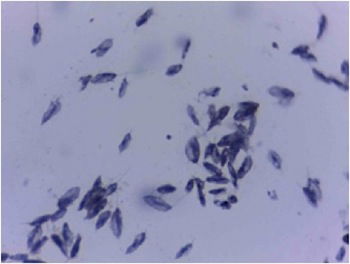
Figure 8. Crithidia is a protozoan parasite of fly guts. It was discovered by Leeuwenhoek in 1680 and was one of his “animalcules.” (A. Gillen image of live Crithidia fasciculata.)
 Figure 9. “Animalcules,” described in depth by Leeuwenhoek, c1795–1798. By Anton van Leeuwenhoek [Public domain], via Wikimedia Commons.
Figure 9. “Animalcules,” described in depth by Leeuwenhoek, c1795–1798. By Anton van Leeuwenhoek [Public domain], via Wikimedia Commons.
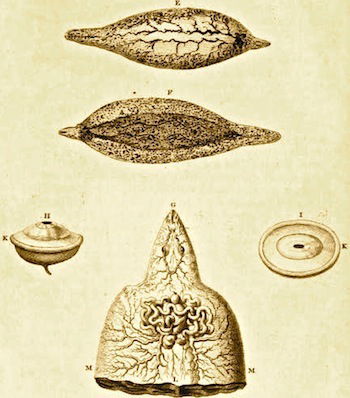
Figure 10. Sheep liver fluke, as drawn and described in depth by Leeuwenhoek. By Anton van Leeuwenhoek [Public domain], via Alan Gillen.
Crithidia is a protozoan parasite of fly guts and was discovered by Leeuwenhoek in 1680 and one of his first protozoan animalcules (Fig. 8 and 9). Leeuwenhoek also studied head and body lice. He also apparently studied fleas (Dobell 1932), as did Robert Hooke. Leeuwenhoek recounted his discoveries to the Royal Society of London in a series of letters from 1674 to 1716. Leeuwenhoek demonstrated the complex structure of mites, lice, and fleas, and described their copulation and life cycles. His studies took him as far as reproduction in various intestinal parasites. Among his observation were oocysts of a parasite in rabbits, called Eimeria stiedai. (It would be 154 years later [1828] before the next apicomplexan2 was described). Leeuwenhoek not only discovered Giardia in diarrhea stools, but he also discovered Opalina and Nyctotherus in the intestines of frogs and their “waste.” He discovered a Trichmonas species, Enterobius vermicularis (pinworm), and studied Balantidium coli, a ciliated parasitic protozoan of the colon according to Dobell (1932).
Sheep liver fluke (Fig. 10) is mainly a sheep parasite, but can cause human infections often via ingested watercress. Leeuwenhoek described Fasciola hepatica, including its internal structures such as branched ceca, dendritic testes, cephalic cone, and its spinose tegument. In the migratory phase, it can be found in ectopic locations of sheep and man. Its juveniles migrate to liver, and in turn cause liver damage and anemia. He found adults worms in the bile ducts causing biliary fibrosis and gall bladder dysfunction. He also wrote at least three scientific letters (in 1695, 1697, and 1702) on this, and in 1796, his notes were compiled into a book after his death, focusing on sheep liver fluke, liver rot and their occurrence in sheep pastures (Bidloo 1698).
Leeuwenhoek’s Faith and Convictions: Thinking God’s Thoughts after Him (Microscopically!)
Leeuwenhoek thought that microscopic organisms were greater marvels than macroscopic ones. His works are full of his admiration for the Wise Creator and His creation, a theme frequently found in his writings of this period. In becoming better acquainted with creation, men wanted to be near the Creator, a conviction that is found among many of the members of the Royal Society (Schierbek 1959, p. 200).
Leeuwenhoek was not ashamed to give glory to God in all his discoveries as evident in his letters to the Royal Society of England. In regards to these letters, Dobell refers to them as “epistles” because Leeuwenhoek often refers to the Divine Artist, Creator, Maker, Sustainer, Lord of the Universe, and Truth. Leeuwenhoek’s writings are among the clearest in the history of microbiology that God made all these tiny creations as a masterpiece in His Divine Works. Perhaps, the book set that most clearly summarizes his creation views is the two-volume set (in three parts) entitled The Select Works of Antony van Leeuwenhoek, containing his Microscopical Discoveries in many of the Works of Nature by the Reverend Samuel Hoole. It was the first major English translation of Leeuwenhoek’s writing published in London first in 1798 and later revised in the early 1800s. It is now reprinted on-line and in classical presses. In a simple on-line search of the word “Creator,” in this book more than a dozen “hits” can be found. A few sample quotes, taken from The Select Works by Samuel Hoole, p. 314, include:
When we duly consider this most perfect workmanship of the Divine Artist, we must confess, that those things which we discover by microscopes and industry are but as the shadow of the those hitherto remain concealed from us, not only in such small animals as this now under consideration, but also in larger animals, and in plants.
It is to be hoped then, that the enquirers into Nature’s works, by searching deeper and deeper into her hidden mysteries, will more and more place the discoveries of the truth before eyes of all, for as to produce aversion to the errors of former times, which all those who love the truth ought diligently to aim at. For we cannot in any better manner glorify the Lord and Creator of the Universe than that, in all things, how small forever they appear to our naked eyes, which yet have received the gift of life and power if increase, we contemplate the display of his Omniscience and Perfections with the utmost admiration (p. 314).
“Leeuwenhoek could not so much as read it [Latin, the scholarly language of his time], and his only literature was the Dutch Bible.” (DeKruif 1954, p. 5). DeKruif makes these comments because Leeuwenhoek needed a translator to read and write Latin and English. Leeuwenhoek’s work relies heavily upon direct observation and the not the scientific literature of the day simply because he could not read it without the help of a translator. “Leeuwenhoek believed in God as piously as any Seventeenth Century Dutchman. He always referred to God [i.e., Christ, the Creator] as the Maker of the Great All. He not only believed in God but he admired him immensely—“What a Being, Who would know how to fashion a bee’s wings so prettily. … His good sense told him that life comes from life. His simple belief was that God had invented all life in six days” (DeKruif 1954, p. 12).3
The Theory of Biogenesis vs. Spontaneous Generation
The discovery of microorganisms raised intriguing questions: Where did these microscopic forms originate? Where did these animalcules come from? Aristotle first formulated the idea that out of organic matter, new life could generate. For thousands of years, the idea of spontaneous generation stated that organisms, such as tiny worms, could arise spontaneously from nonliving material. This idea began to fall into disfavor due to the work of Francesco Redi. In a simple but significant experiment (1668), he demonstrated that worms found on rotting meat originated from the eggs of flies, not directly from the decaying meat as advocates of spontaneous generation believed. To prove this, he simply covered the container holding putrefying meat with gauze fine enough to prevent flies from entering the container to deposit their eggs. Worms appeared on the surface of the gauze—but not the meat. Perhaps Redi (1668, p. 26) put it best when he said:
I shall express my belief that the earth, after having brought forth the first plants and animals at the beginning by order of the Supreme and Omnipotent Creator, has never produced any kinds of plants or animals, either perfect or imperfect; and everything which we know in past or present times that she has produced, came solely from the true seeds of the plants and animals themselves, which thus, through means of their own, preserve their species. Spontaneous generation devotees stated that life could appear without the hand of God, prompting skeptical scientists to study this tenuous doctrine.
Despite Redi’s compelling findings, the idea of spontaneous generation was still difficult to totally disprove. One reason for this was that the gauze used by Redi could not prevent the development of microorganisms (bacteria and mold) on the meat’s surface. New evidence by Leeuwenhoek helped to reveal that these microbes under the microscope caused decay. In addition maggots, fleas, and the like formed by biogenesis not “spontaneous generation.” It was Leeuwenhoek (not Redi) who proved that such insect creatures hatch from eggs (as seen with his microscope).
Leeuwenhoek continued to gather evidence for biogenesis; he first was able to show bacteria and protozoa in rainwater. He was also able to show complete life cycles for worms, fleas, and other insects. As Leeuwenhoek studied the intricacies of microorganisms, he found that each had a “parent”—that is each form of life always came from other life. He would lend great support to Redi’s evidence that spontaneous generation was not possible. However, it would not be until 1864 that Pasteur would supply the final proof of biogenesis, about 200 years after debate had begun (Gillen and Sherwin 2007).
Complexity in Cell Movement: The History of Created Microbe Movement Starts with Leeuwenhoek
Say to God, “How awesome are Your works!” (Psalm 66:3, NASB)
Many people are familiar with the work of Michael Behe and his arguments for the intelligent design of living things. Dr. Behe, a biochemistry professor and author of the 1996 best-selling book, Darwin’s Black Box, challenged the classical neo-Darwinian explanation that intricate cell structures arose by chance. He did this by using structures such as the bacterial flagellum and Paramecium cilia as a popular argument for intelligent design, to illustrate the concept of irreducible complexity.
First, the flagellum is a corkscrew-shaped, hair-like appendage attached to the cell surface of some types of bacteria that acts like a self-propulsion mechanism (like an outboard motor), allowing the bacterium to swim. Second, a protozoan’s cilia act like a multitude of flagella, allowing many types of protozoa to swim and move. Both the bacterial flagellum and the protozoan’s cilia are irreducibly complex mechanisms, meaning that all their parts must have been present at the start to be working and therefore selected for, which suggests they could not have come about by a slow evolution of sub-parts. Behe was not the first biologist to realize this amazing design. A few people are familiar with the late Dr. Richard Bliss’ “Clear Evidence of Creation Complexity” given at ICR’s lecture tours (personal witness, 1981). Dr. Bliss compared the flagellum of Escherichia coli to a Mazda (TX8) rotary engine. In the 1980s, he pointed out its complexity, order, and design. But even fewer people know that the recognition of design in microbe motility started with Leeuwenhoek.
Leeuwenhoek was not only the first microbe hunter; he was also the first to recognize the amazing design in microbe motility. “He spoke of the amazing animalcules, the perfections and providence of nature’s Creator, and God the inventor.” His writings glow of astonishment, sparkle, and truth. One more sample is given below (Schierbeek 1959, p. 59):
These animalcules had divers colours, some being whitish and transparent; others with green in the middle, and before and behind white; others yet were ashen grey. And the motion of most of these animalcules in the water was so swift, upwards, downwards, and roundabouts, that it was wonderful to see: and I judge that some these little creatures were above a thousand times smaller than the smallest ones I have ever yet seen. (Schierbeek 1959, p. 59)
On September 7, 1674, Leeuwenhoek observed moving protozoa, including Vorticella. Then, in 1676, he fully described moving bacteria. In 1681 he described Giardia with “paws”, and their swimming “prettily.” In 1713, he described Vorticella’s stalk and what were probably their cilia. Later, he described Opalina (a flagellated protozoan parasite of frogs) and Balantidium coli (a ciliated protozoan parasite of mammals). We know today that all of these move by molecular motors that have an even more complex design than Leeuwenhoek could even imagine.
Conclusion

Figure 11. Leeuwenhoek exhibiting microscopes to Catherine of England (the wife of King Charles II). From U.S. National Library of Medicine. Original painting by Pierre Brissaud.
Leeuwenhoek was the first microbe hunter. A common view of Leeuwenhoek is that he was a skilled cloth maker who made grinding lenses in his spare time and dabbled with his new invention of the microscope. He scribbled images and sometimes sent them to the outside world—keeping everything secret. Some believed that he speculated on what these objects looked like in detail because “simple” microscopes do not reveal the detail and resolution of today’s microscopes. This distorted view has led to many misconceptions about Leeuwenhoek and he has been misunderstood until recently (Gaynes 2011). He was not entirely secretive; although he never published his methods of grinding a lens to achieve clear images up to ~500X. He did widely present his ideas to scientists in England, including Robert Hooke and others; and he entertained many kings, queens, princes, and other royalty with his findings. In Figure 12, Leeuwenhoek is shown exhibiting microscopes to Catherine of England (the wife of King Charles II). Many kings and queens of Europe came to see Leeuwenhoek and his microscopic discoveries. In particular, he enjoyed showing the circulation of blood and its cells moving through the tails of fish (Fig. 12).

Figure 12. Red Blood Cells drawn by Leeuwenhoek in 1719. By Anton van Leeuwenhoek [Public domain], via Wikimedia Commons.
Leeuwenhoek never wrote a scientific article like those today. He did, however, “publish” his findings through his many letters to the Royal Society of Science. He paid a professional artist to illustrate his observations. He had good science skills beyond grinding lenses and the skill developed out of his life’s curiosity to know the truth. He did things beyond those that would bring him money or fame. Perhaps, he had read, “The Lord saith, Be it far from me; for them that honour me I will honour
” (1 Samuel 2:30, KJV).
Dobell’s (1932) biography of Leeuwenhoek is the single best biography today that is easily accessible. The book, The Select Works of Anton van Leeuwenhoek, translated by Samuel Hoole (1798) is the best source for Leeuwenhoek’s expression of faith. Leeuwenhoek was born into the Dutch Reformed tradition, which had a high view of Scripture and salvation in Jesus Christ, and a firm doctrine of creation. He was baptized and buried in a Calvinist church, and his second wife was the daughter of a Calvinist minister. This Calvinist tradition also understood and encouraged the investigation of God’s handiwork in nature. Many who read Leeuwenhoek’s works remark that his character was true and his work for the right reasons, to find glory in God’s creation.
The Collected Letters of Leeuwenhoek explains that he was a part of the New Philosophy of scientists like Robert Boyle and Robert Hooke, who regarded the study of nature as the “work to the glory of God and benefit of Man.” The newly-formed Royal Society was composed largely of Puritans with similar convictions, from which we can infer Leeuwenhoek shared with them a common belief, since he took pride in his relationship with the Royal Society. He also read and was greatly influenced by Robert Hooke (an Anglican) and his discoveries with the microscope. He also entertained King James II who also indirectly influenced England’s “reformation.” Many British scientists in this age were genuinely trying to “think God’s thoughts after Him” and interweave science with the Bible. Christianity was a driving force in the rise of modern science. Schierbeek (1959, p. 31) discusses Leeuwenhoek’s personal beliefs and says:
To this we must add his deep religious assurance, his complete faith in the “All-wise Creator,” a never-flagging admiration for the perfection of the most minute, hidden mysteries of the work of His hands and the conviction that his researches would surely help to make His Omnipotence more universally known. Without ever lapsing into high-flown phrases he repeatedly gave evidence of his religious faith: “Let us lay the hand on our mouth, and reflect that the All-wise hath deemed this needful for the reproduction of all that hath received movement and growth, and so, the why and the wherefore we can but guess after.”
Leeuwenhoek died on August 26, 1723 at the advanced age of 90. He apparently died from the broncho-pneumonia that he had suffered from for many years (Dobell 1932, p. 95). The legacy of Leeuwenhoek is that that we also can imitate the awe and wonder that can only emanate from a person who has a joyful, personal relationship with God the Creator (Coppedge 2012). Dan Graves (1996), in Scientists of Faith, writes, “He often referred with reverence to the wonders God designed in making creatures small and great. His virtues were perseverance, simplicity, and stubbornness. He loved truth above any theory, even his own. He asked of his challengers only that they prove their points as he proved his.” Perhaps, we should do the same, as there is increasing challenge to creation biology today.
| Table 1. Chronology. Timeline for Leeuwenhoek’s Life and Early Microscopes | |
|---|---|
| 1595 | Jansen brothers made the first “compound microscope.” This was a simple construction of two lenses in a tube. |
| 1625 | Galileo invented an improved compound microscope with a stand and is adjustable. |
| 1632 | Antony van Leeuwenhoek was born on October 24, 1632 in Delft, Netherlands. |
| 1665 | Robert Hooke publishes Micrographia and reveals his refinements to the compound microscope enabled him to describe cells, molds, plants, and insect parts, such as compound eyes of flies, small parasites such as lice and fleas. |
| 1668 | Leeuwenhoek visits England and hears about Robert Hooke’s Micrographia. |
| 1673 | Leeuwenhoek writes first letters to the Royal Society of England. |
| 1674 | Leeuwenhoek described the alga, Spirogyra, and various ciliated and flagellated protozoa from pond water. This is the birth of microbiology and protozoology. He found that yeast consists of individual plant-like organisms. |
| 1675 | Leeuwenhoek discovered, described and differentiated erythrocytes (red blood cells) in humans, swine, fish, and birds. |
| 1677 | Leeuwenhoek was the first to observe spermatozoa in humans, dogs, swine, mollusks, amphibians, fish, and birds. |
| 1679 | Leeuwenhoek described microscopic crystals of sodium urate that form in the tissues of gout patients. |
| 1680 | Leeuwenhoek found and described foraminifera (“wee cockles”) in the cliffs of England and nematodes in water. Leeuwenhoek begins his many micro-dissections, mainly on insects, making many discoveries. He wrote extensive accounts of fleas, their anatomy, and life cycle. He was the first to realize that “fleas have fleas.” |
| 1683 | Leeuwenhoek discovered the bacteria in dental tartar, including a motile bacillus, monads, and micrococcus. Leeuwenhoek observed bacteria in feces, including a motile spirochete. In addition, he found parasitic protozoa in feces (Giardia and Balantidium). |
| 1683 | Leeuwenhoek saw the lymphatic capillaries, containing “a white fluid, like milk.” |
| 1692 | Leeuwenhoek finds bacteria in rainwater. He uses this observation as bacteria in rainwater “seeded” ponds, lakes, etc. and used it as one more evidence against spontaneous generation. |
| 1698 | Leeuwenhoek described the blood capillaries in fish; he demonstrates blood circulation in eels to Peter the Great. |
| 1702 | He observed the sessile ciliate protozoa Vorticella and Stentor, and the colonial protozoon Volvox in pond water. He discovers diatoms, free-swimming and sessile rotifers in pond water. |
| 1711 | Leeuwenhoek entertains 26 famous visitors, including Catherine of England (wife of King Charles II). |
| 1716 | Leeuwenhoek receives medal from the University of Belgium and is honored for his genius in his own time. |
| 1723 | He died on August 30, 1723, aged almost 91. He dies in his hometown of Delft. |
References
Anderson, D. 2009. Lens on Leeuwenhoek. Retrieved from lensonleeuwenhoek.net on May 22, 2012.
Behe, Michael J. 1996. Darwin’s Black Box: The Biochemical Challenge to Evolution. New York: The Free Press.
Bliss, Richard. 1981. Clear Evidence of Creation Lecture. El Cajon, California: Institute for Creation Research.
Bidloo, G. 1698. Brief Van G. Bidloo Aan Antony van Leeuwenhoek 1698, 2012 reprint. Aliso Viejo, California: Buy.com press.
Coppedge, D. 2002. Microscopic Magnificence, Christian History 76, No. 4: 43.
Coppedge, D. 2012. Antony van Leeuwenhoek, 1632–1723, The World’s Greatest Creation Scientists. Retrieved from creationsafaris.com/wgcs_2.htm on May 22, 2012.
DeKruif, P. 1954 (reprint of 1926). Microbe Hunters. New York: Harcourt, Brace & World, Inc.
Dobell, C. 1932. Anthony van Leeuwenhoek and His “Little Animals.” London: Staples Press.
Ford, B. J. 1985. Single lens, the story of the simple microscope. New York: Harper & Row.
Gaynes, R. P. 2011. Germ Theory: Medical pioneers in infectious diseases. Washington, DC: American Society for Microbiology Press.
Gillen, A. L. 2007. The Genesis of Germs: Disease and the Coming Plagues in a Fallen World. Green Forest, Arkansas: Master Books.
Gillen, A. L. 2011. Microbiology Lab Manual, 4th ed. Kearney, Nebraska: RL Simonson Studios.
Gillen, A. L. and Sherwin, F. 2008.Louis Pasteur’s Views on Creation, Evolution, and the Genesis of Germs. Answers Research Journal 1: 43–52.
Graves, D. 1996. Scientists of Faith: 48 Biographies of Historic Scientists and Their Christian Faith. Grand Rapids, Michigan: Kregel Publications.
Hoole, S. 1798. The Select Works of Antony van Leeuwenhoek, containing his Miscrosopical Discoveries in many of the Works of Nature. 2 vols. London: G. Sidney, 1798; New York: ECCO Press, 2012 reprint.
Redi, F. [1688] 1969. Experiments on the generation of insects. Translated by Mab Bigelow. Millwood, New York: Kraus (reprint).
Roberts, L. S. and Janovy, J., Jr. 2008. Schmidt and Roberts’ Foundations of Parasitology, 8th Ed., Boston, Massachusetts: WCB McGraw-Hill.
Schierbeek, A. 1959. Measuring the Invisible World: The Life and Works of Antoni van Leeuwenhoek. London: Abelard-Schuman Publishing.
Footnotes
- Antonie Philips van Leeuwenhoek (in English: Anton or Antonj; in Dutch: Anthonie, Antoni, or Theunis; in Latin: Antonius; See Dobell, 1932, p. 300–303).
- Apicomplexan—a parasitic protozoan in animal blood that has organelles including microtubules at the apical end (Roberts and Janovy 2008).
- DeKruif was a good microbiology historian; however, we do not know his primary source for this statement.

Answers in Genesis is an apologetics ministry, dedicated to helping Christians defend their faith and proclaim the good news of Jesus Christ.
- Customer Service 800.778.3390
- Available Monday–Friday | 9 AM–5 PM ET
- © 2025 Answers in Genesis

